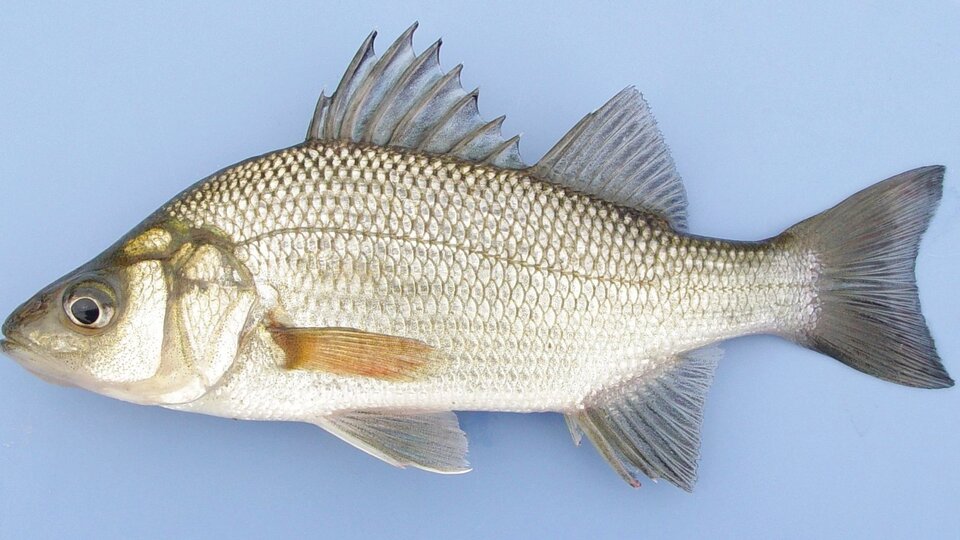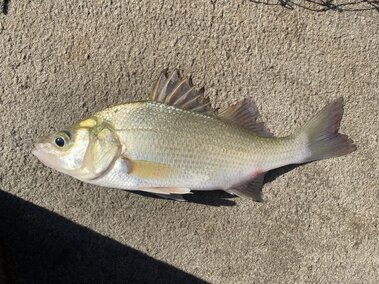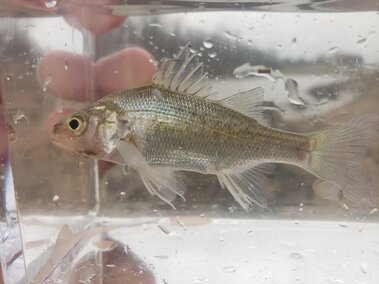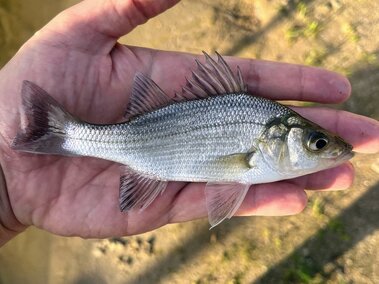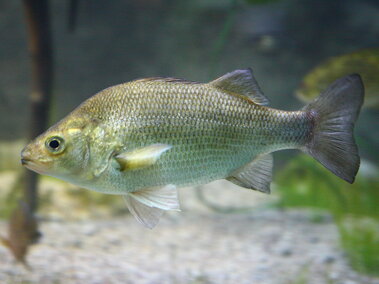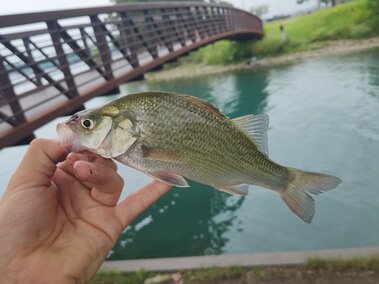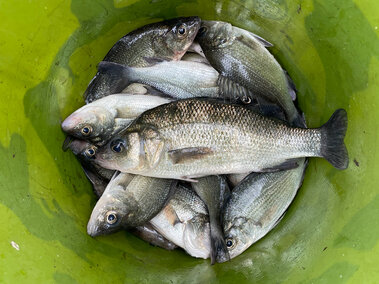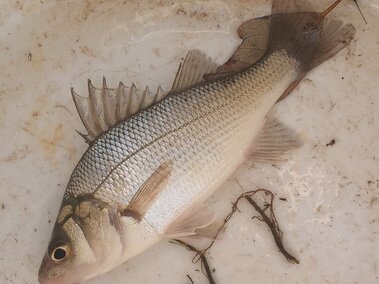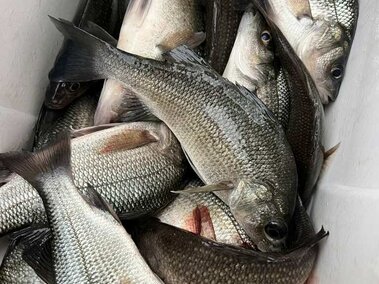General Information
Species Name: Morone americana
Also Known As: silver perch, gray perch, blue-nose perch
Family: Moronidae (Temperate Basses)
Life Span: 5-7 years
Life Cycle: Females migrate to shallow waters in the spring where they lay tens of thousands of eggs to be externally fertilized by males.
Origin: Eastern United States and Canada
Injurious: No.
Category 2: Priority Aquatic Invasive Species
Why Are They Invasive?
White perch feed heavily on the eggs and young of important game species, and have potential to cause declines in native species’ populations, both from egg predation and in competing with native fish for food and habitat and hybridizing with native white bass. Due to their high reproductive success, white perch easily overpopulate an ecosystem, taking needed resources from native fishes.
What Do They Look Like?
White Perch are grayish green in color, darker along the back with silvery, lightly mottled sides, a silvery-white belly, and bluish tint along lower jaw. They have a highly domed back, and the lower jaw projects slightly. It has three spines in its anal fin and a deep notch in the dorsal fin. The tail is also mildly forked. Its body shape is similar to native white bass, but deepest just ahead of the dorsal fin, tapering back toward the tail. Unlike native white bass, white perch have no dark lines running along the back and sides.
Photos
Where Do They Live?
White perch occupies brackish water in its native range along the Atlantic coast. It easily survives freshwater where it can form large populations. They generally found near shore and are an open-water species, showing little preference for any substrate type. White perch spawn in tributaries of larger water bodies. They are established in Illinois, Indiana, Kentucky, Massachusetts, Michigan, Minnesota, Missouri, Nebraska, New Hampshire, New York, North Carolina, Ohio, Pennsylvania, Vermont, and Wisconsin.
How Do They Spread?
White perch entered the lower Great Lakes in early 1950s through the Erie and Welland Canal systems and spread westward. They have also been spread by accidental inclusion in shipments for stocking other fish species to inland lakes and accidental bait bucket transfer. White Perch were brought from New Jersey to Nebraska in 1964, and fry produced that year in a hatchery were accidentally introduced into a reservoir that provided access to the Missouri River. White Perch have been stocked intentionally in other areas for sportfishing.
How Do I Control Them?
Contact the Nebraska Game and Parks Commission to determine appropriate control methods. To prevent their spread and introduction into your waterbodies:
CLEAN your watercraft, trailer, angling gear and other equipment. Remove all aquatic vegetation and animal species from your equipment.
DRAIN your watercraft at the ramp by removing the boat plug and draining all live wells and ballast tanks.
DRY your watercraft, trailer and other equipment for at least 7 days before visiting another waterbody.
DON'T DUMP BAIT. Dispose of bait by emptying bait buckets on dry land, away from waterbodies or in a trash receptacle. Moving a live organism from one waterbody to another is illegal, even if you are planning to use the organism as bait.
DON'T LET IT LOOSE. Do not release or transport exotic or non-native fish species to new ecosystems. It is unlawful to release any aquatic species into a waterbody other than the one from which it was harvested. Doing so can promote the spread of AIS.
What Should I Do If I See Them in Nebraska?
If you see white perch in Nebraska, you should report them to the Nebraska Game and Parks Commission's Aquatic Invasive Species (AIS) Program using their AIS Report Form. For guidance on what information to include in your report, check out our reporting tips.
References and More Information
Center for Invasive Species and Ecosystem Health
Minnesota Department of Natural Resources
